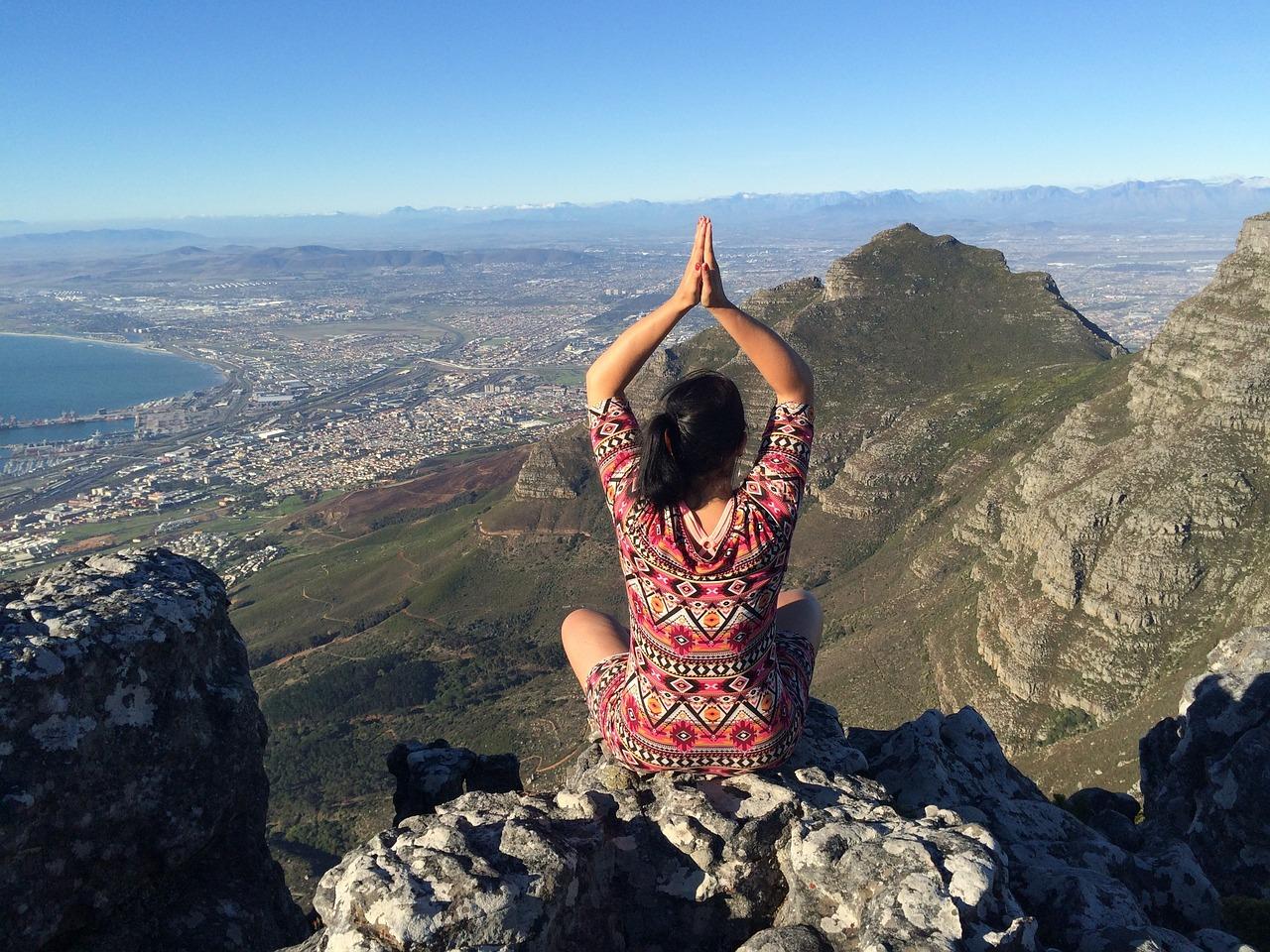Search for yoga retreats
Discover yoga retreats, holidays, and courses from worldwide.
Ever toss and turn all night, only to wake up feeling like you ran a marathon in your sleep? Or maybe stress has you feeling constantly on edge, with your mind racing a mile a minute. If this sounds familiar, you're not alone. Many of us struggle with sleep issues, chronic tension, and a general lack of relaxation in our daily lives.
This is where restorative yoga comes in. It's a gentle practice designed to promote deep relaxation and rejuvenation. Unlike vigorous vinyasa flows, restorative yoga focuses on holding passive stretches for extended periods, often using props like bolsters, blocks, and blankets for additional support.
Why You Need Restorative Yoga in Your Life

There are many reasons to incorporate restorative yoga into your routine. Here are just a few signs that your body (and mind) might be craving a restorative practice:
- Sleepless nights: Restorative yoga can help reduce stress hormones that interfere with sleep, promoting a deeper, more restful night's sleep.
- Chronic tension: Holding poses for extended periods with props allows your muscles to fully release tension, leaving you feeling looser and more relaxed.
- Reduced stress: Restorative yoga's focus on deep breathing and relaxation can significantly reduce stress levels, promoting a sense of calm and well-being.
- Improved flexibility: Over time, restorative yoga can gently improve your flexibility without any forceful pushing or straining.
- Enhanced body awareness: By holding poses for longer periods, you become more in tune with your body's sensations, allowing you to identify areas of tension and tightness.
Ready to Dive Deeper? Consider a Yoga Retreat!
While you can certainly practice restorative yoga at home, immersing yourself in a dedicated yoga retreat can take your experience to a whole new level. Imagine waking up to breathtaking views, surrounded by nature, and spending your days practicing yoga, meditation, and other relaxation techniques. Yoga retreats often offer specifically designed restorative yoga programs led by experienced instructors, providing a perfect opportunity to unwind, recharge, and deepen your practice.
Top 10 Restorative Yoga Poses for Ultimate Relaxation
Whether you're a seasoned yogi or just starting out, these restorative yoga poses are a great way to experience the profound benefits of this practice.
1. Child's Pose (Balasana):
- Benefits: A comforting and grounding pose that stretches the back, hips, and ankles. It also calms the mind and promotes relaxation.
- How to: Kneel on the mat with your toes together and knees hip-width apart. Sit back on your heels, rest your torso between your thighs, and forehead on the mat. Arms can be extended forward or alongside the body.
- Variation: Support your knees with a folded blanket or bolster for additional comfort. If desired, use another folded blanket or bolster to cushion your forehead.
2. Supported Bridge Pose (Setu Bandha Sarvangasana):
- Benefits: Opens the chest and shoulders, strengthens the core, and improves circulation in the legs.
- How to: Lie on your back with knees bent and feet flat on the floor. For added support, position a block or bolster underneath your lower back. Relax your arms by your sides, palms facing down.
- Variation: If your hamstrings feel tight, walk your feet further away from your hips. You can also experiment with different block heights for varying levels of support.
3. Reclining Bound Angle Pose (Supta Baddha Konasana):

- Benefits: Gently stretches the inner thighs, groin, and hips. It can also calm the nervous system and promote feelings of peace.
- How to: Lie on your back and bring your knees towards your chest. Gently open your knees out to the sides, soles of your feet touching. Create a comfortable and supported position by placing bolsters or pillows under your calves or thighs. This will help avoid any strong stretching sensation. Arms can rest by your sides or on your belly.
- Variation: If the pose feels too intense, use a strap or yoga belt looped around your soles of the feet to create a gentler stretch.
4. Supported Forward Fold (Paschimottanasana):
- Benefits: Lengthens the spine and hamstrings, improves circulation, and calms the mind.
- How to: Sit on the edge of a bolster with your legs extended in front. Gently fold forward from your hips, reaching towards your toes. If needed, use bolsters or folded blankets under your thighs for support as you fold forward. Keep your spine long and avoid hunching.
- Variation: Stack multiple bolsters on your thighs for a more supported and comfortable forward fold.
5. Legs Up the Wall (Viparita Karani):
- Benefits: Promotes relaxation, reduces fatigue, and improves circulation throughout the body.
- How to: Lie on your back with your hips close to a wall. Swing your legs up the wall and relax your entire body. Find the ideal distance from the wall that allows your legs to extend straight up comfortably.
- Variation: Experiment with different leg positions like bent knees resting on the wall, tree pose legs (one foot resting on the other thigh), or bound angle legs (soles of the feet together resting on the wall).
6. Sleeping Pigeon Pose (Eka Pada Rajakapotasana):
- Benefits: Opens the hips, inner thighs, and buttocks. It can also improve flexibility and circulation in the lower body.
- How to: Start on all fours. Bring one leg forward and place your shin down on the mat, knee out to the side and foot flexed near your pelvis. Straighten your back leg, stretching your heel back as far as feels comfortable. For added stability, a block can be positioned under your front hip. Gently fold forward, resting your torso on a bolster or pillow placed on the inner thigh of your front leg. Hold for several minutes and then repeat on the other side.
- Variation: If you feel discomfort in your back foot, place a folded blanket under the toes.
7. Thread the Needle Pose (Parsva Balasana):
- Benefits: Opens the shoulders and chest, stretches the spine, and promotes relaxation in the side body.
- How to: Start on all fours with your hands shoulder-width apart and knees hip-width apart. Keep your back flat and core engaged. Reach one arm up towards the ceiling, then thread it under your body, placing your palm on the mat beside your opposite shoulder. Gently twist your torso towards the ceiling, keeping your hips stacked over your knees. Hold comfortably for several breaths before transitioning to the other side.
- Variation: For a deeper shoulder stretch, lift your free arm and reach it behind you to grab the inner thigh of your top leg.
8. Seated Cat-Cow (Upavistha Bitilasana Marjaryasana):
- Benefits: Mobilizes the spine, improves flexibility, and massages the internal organs.
- How to: Sit on the floor with your knees bent and feet flat on the mat. Inhale and arch your back, lifting your chest and tailbone, looking slightly forward for a gentle backbend. Exhale and round your back, tucking your chin to your chest and engaging your abdominal muscles. Repeat this movement several times, flowing with your breath.
- Variation: If sitting cross-legged is uncomfortable, sit with your knees bent and feet flat on the floor, hip-width apart.
9. Supine Spinal Twist (Jathara Parivartanasana):
- Benefits: Gently twists the spine, stretches the back and shoulders, and promotes detoxification.
- How to: Lie on your back and bring one knee up towards your chest. Hug the knee to your chest and gently twist your torso towards the opposite side, bringing the knee across your body towards the ground. Place a bolster or pillow under your knee for support if needed. Keep your shoulders flat on the mat and extend your other arm out to the side, palm facing down. Hold for several breaths, then come out and repeat on the opposite side.
- Variation: To deepen the twist, gently look in the opposite direction of your bent knee.
10. Supported Fish Pose (Matsyasana):

- Benefits: Opens the chest and throat, improves circulation, and promotes relaxation.
- How to: Place a bolster or folded blanket on the floor lengthwise. Lie on your back with your head resting on the mat just beyond the bolster and your shoulders on the bolster. Allow your chest to gently open as your head falls back.Extend your arms out to the sides, palms facing upwards, or rest them comfortably alongside your body.
- Variation: You can use this pose as an alternative to Savasana (Corpse Pose) at the end of your yoga practice for a more restorative finish.
Final Thoughts
Restorative yoga is a powerful tool for promoting relaxation, reducing stress, and improving overall well-being. Whether you practice at home or take the plunge and experience it at a yoga retreat, incorporating restorative yoga into your routine can leave you feeling refreshed, rejuvenated, and ready to take on the world (or at least your next to-do list) with a renewed sense of calm. So, take a deep breath, grab your favorite props, and get ready to unwind!
Craving More Stories?
Join our ShopYogaRetreats newsletter for the latest updates on thrilling
destinations and inspirational tales, delivered straight to your inbox!
We value your privacy. Your email address will never be shared or published.
 English
English Deutsch
Deutsch Français
Français Nederlands
Nederlands Español
Español

